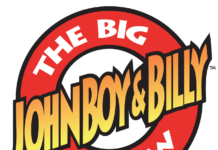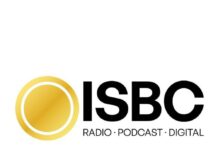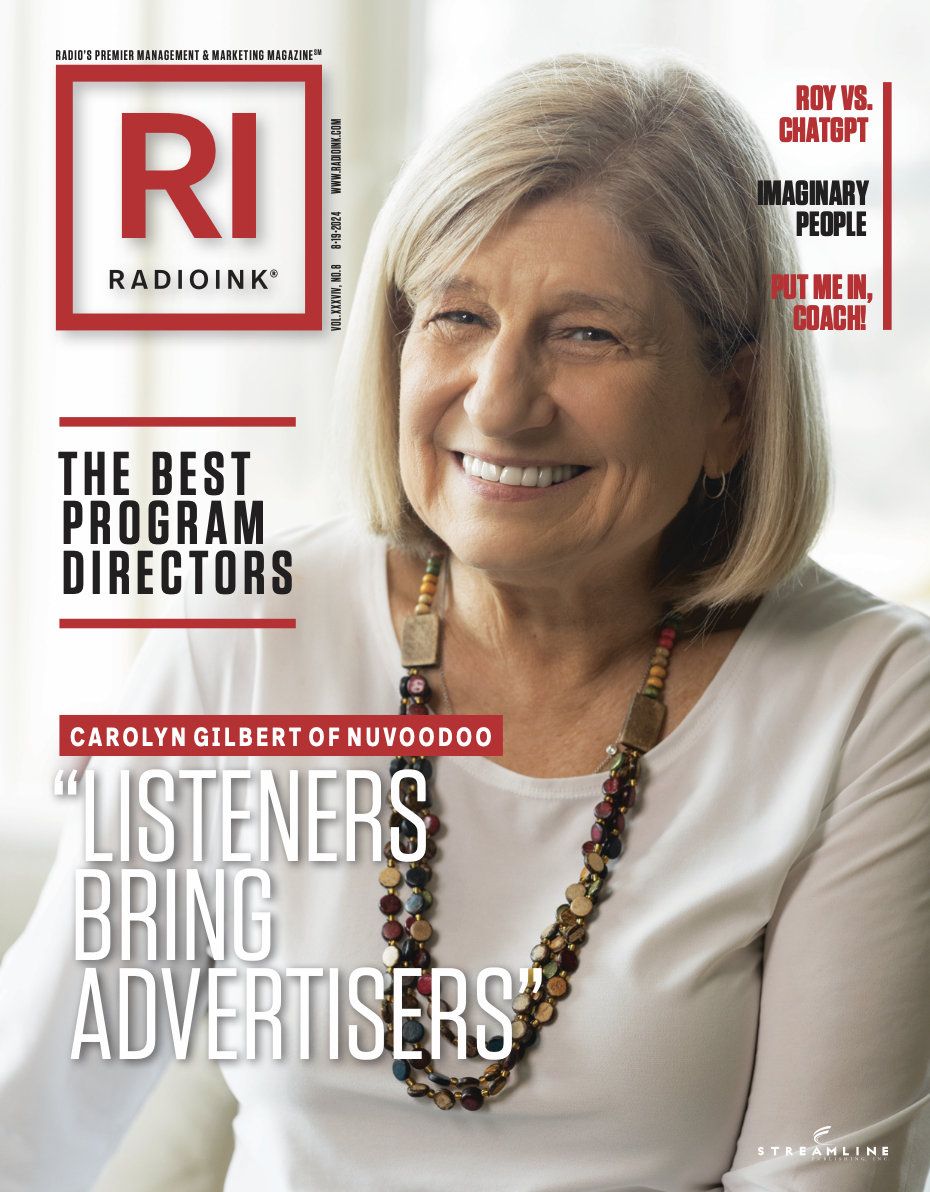
(By Mike McVay) Radio has a powerful tool at its fingertips. It’s what our legacy is built on, and something both the audience and those in the medium appreciate. Unfortunately, it’s also an asset that’s chronically underutilized today, compared to days past. What is it?
The strength of audio.
When harnessed properly, audio creates a magic that’s bigger than reality. It enhances the listening experience. It creates a mood. It creates a type of attraction similar to a moth drawn to a flame. The challenge in rekindling this creative fire is that few stations have the internal staff to make such magic. That’s where an allocation in investment for external creative services comes into play.
When I speak about the power of audio to a group, I often ask them to close their eyes and imagine me cutting a lemon for them to suck on. I spend time building the story by talking about the texture of the lemons’ skin, the sting of the juice on my finger, and the way the juice of the fruit feels on my tongue. The way the sourness I’m tasting makes me pucker always gets a reaction. The respondents’ faces tighten. They move their lips as their mouths water. I see some pucker as I say the word “lemon.”
The use of audio enables a producer to exaggerate a point, paint a picture, or share an emotion or experience. Be it music, sound effects, the pace of a read, or the timbre of the announcer’s voice, the magic of audio is that you can accomplish in seconds what it would take in days to create using the sense of sight. Sound, and sometimes the lack of sound, can be very attention-getting. Want your audience to look at the radio, their device, smart speaker, or wherever they’re hearing your station? Go silent for three full seconds. Nothing gets attention more quickly in our noisy world than silence.
The very best commercial message on your radio station should be your promotional message. In a promo, you’re selling to the audience what’s important to your station’s success. Promos that image the station, promote contests, events, and your product need to be well written and well produced. The best-written messages emphasize the benefit of the station, promotion, or experience.
My style of writing was influenced by several legendary programmers and continued to evolve over the years. Chuck Blore, who was an excellent program director in the ’60s, launched his own television production company in the ’80s where he employed the concept of “brainstorming” to create unique imaging that screamed for one’s attention. Blore is best known for “The Remarkable Mouth” television commercials. Blore taught me to look for the audio magnet that attracts attention.
Jack McCoy, a programmer who used his skills to evolve into an amazing marketer and consultant, taught many of us to create a big, imaginative sound when he launched The Last Contest. He followed that with The Prize Catalog and continued to mentor many as to the power of sound. McCoy wrote contest promos in a style that I looked at as The Reverse Pyramid. Most people start with the prize and how you can win it. McCoy started with the benefit and imagined the listener into the prize.
For example, “Imagine the ‘ooohs’ and ‘ahhhs’ of your friends as you round the corner in your brand-new Porsche 911 Turbocharged supercar.” He knew that the reason you want such a flashy car is to be seen in it by your friends.
Another example: “The grit of the sidewalk crunches under your shoes as you walk up the driveway to your newly renovated 5,000 square foot home… and as you lean against the new GM SUV in that driveway, you realize that listening to (WXXX) changed your life.” Visually written, focused on the benefit of winning more so than the prize, and another emphasis on the fantasy of being recognized by your friends and family.
The key to writing in such a fashion starts with understanding the benefit to the listener of winning the prize. Don’t get lost in the prize. Focus on why someone wants to win that prize. Write about that. Write visually when describing the prize, but again, stay focused on what the prize means to someone who wins it. A trip to Hawaii means escape – it’s too far away to rush back if the workplace needs you. Winning tickets to see Taylor Swift anywhere in the world is not only about witnessing a once-in-a-lifetime artist performance, but it’s something that your friends will envy. It is an experience. Experiences are bigger than prizes.
Produce your messaging in a way that matches the image of your station. If you have an exciting, energetic, high-energy station, then your promotional message should match that environment. Think about your average listener’s lifestyle and then write and produce your message with that audience in mind. The challenge is to make it stand out. That’s where production and the voiceover artist come into play.
Sound effects, music changes, and production tricks like doubling a voice or backwards echo, can enhance your message. It can also make the message very annoying. Adding in pings, swooshes, zips, zaps, and intrusive music can make a promotional message overwhelming and irritating to hear. These elements need to be used appropriately and sparingly, if at all. Think of it as adding a touch of spice to a dish that you’re creating in your kitchen. Used properly, it can emphasize the promo’s message and make it memorable.
The voiceover talent for your station should be selected based on the image you want to be forward-facing to your audience. The voice you use is another part of how your station is identified in the listener’s memory. Sometimes stations change their voice talent because a new Program Director has a favorite, or because they simply want to leave their fingerprints on the station, but a change for change’s sake seldom delivers positive results.
There are other times when change is warranted, and the freshness of the new sound attracts a new audience. Knowing the objective before you make the change increases your chance of success. The more memorable your talent and their delivery, the more likely it is that their voice will become a part of your audio signature. The sound of the VO talent can be another identifier that leads to being a memorable station. Examples from the past: Len “Boom-Boom” Goldberg on the early days of Z100/NYC and WMMS/Cleveland, Johnny Donovan during the heyday of WABC/New York, and the late Keith Eubanks on 99X/Atlanta. Their influence can still be heard on the radio today.
Audio can instigate every emotion possible: fear, anger, happiness, sadness, exhilaration… Audio’s magic can entice a listener to buy a product or service, enter a contest, listen to a radio station longer, donate to a charity, or simply enjoy the listening experience. More tools to help write and create audio magic exist today than ever before, including the use of AI.
The saddest thing to hear is when audio isn’t used to create magic. The station that produces messaging that sounds like a “price and item” commercial, is far from being magical. More importantly, they’re not going to be memorable. That impact on ratings is negative. It impacts the ratings for now and possibly the future.
Engage your brain and those on your team who are creative to “riff” around copy points. From creative fun can come some great copy points. If you can think it, you can write it, voice it, record and produce it, and create a multicolored, unduplicatable picture in the listener’s mind.
Now go make some magic.
Mike McVay is President of McVay Media and can be reached at [email protected]. Read Mike’s Radio Ink archives here.







At WHN radio, I was lucky to be able to brainstorm with Dale who was promotion director. Those who may not know the name will know his later slogan “I want my MTV.” Dale was still studying advertising at the college level when he came to WHN. Two of our WHN campains won CLiO award certificates. He taught me that the most effective slogans are deceptively simple. It was “WHN Gives Me The Music I Wanna Hear” which made that station the most listened to Country station of all time (a pretty safe record since they changed the survey methods since the 1970s).
Dale Pon was special. Working with him and for you gave me a great foundation for my career. Thank you for that.
You nailed it, Mike, and I have an ancient example that proves the point.
Going back to my first PD gig (1978-1981), I was asked by the station owner — who was also one hell of a good salesman — to do a spot for a aftermarket car stereo shop, using co-op copy. Copy had to be verbatim or the bucks wouldn’t be paid, and client had to approve before signing the buy. Looked it over, and saw that the focus was on a new technology that reduced the then-problem of the “picket fence” effect on FM reception in the car.
Here’s what the spot ended up being:
(very uptempo bed, me being hyper and borderline top-40)
“The new Craig car stereos have been redesigned around one important fact!”
(music abruptly ends)
“Cars … move.”
(medium slow tempo bed, I become conversational)
“That’s why the new Craig car stereos …” etc.
Owner loved it. Client doubled the buy. I never forgot.
You nailed it, and I have an ancient example that proves the point.
Going back to my first PD gig (1978-1981), I was asked by the station owner — who was also one hell of a good salesman — to do a spot for a aftermarket car stereo shop, using co-op copy. Copy had to be verbatim or the bucks wouldn’t be paid, and client had to approve before signing the buy. Looked it over, and saw that the focus was on a new technology that reduced the then-problem of the “picket fence” effect on FM reception in the car.
Here’s what the spot ended up being:
(very uptempo bed, me being hyper and borderline top-40)
“The new Craig car stereos have been redesigned around one important fact!”
(music abruptly ends)
“Cars … move.”
(medium slow tempo bed, I become conversational)
“That’s why the new Craig car stereos …” etc.
Owner loved it. Client doubled the buy. I never forgot.
KM … thank you for sharing your experience and knowledge. Seriously.
One of my mentors is Frank Wood, the creative mind behind the early days of WEBN, Cincinnati a station that essentially built a brand on inventive and cinematic audio imaging. Frank always told me the “best radio begins with writing”. Later in my career I was fortunate to write and produce with the late Nick Michaels. Nick was all about what you wrote today, Mike. He was obsessed with being genuine, and making that emotional connection with the listeners. He created some wonderful branding for us in Atlanta at our AAA station dave-fm. “It doesn’t matter how many albums sold or what number it reached on a chart, it was how the music made you feel”. That was Nick.
You know why football is better on radio than TV? The pictures are better.
I’ll echo Jeffrey’s point- a very important article indeed. PD’s, are you listening?
Thank YOU Scott. Beau and Nick taught many how to make Magic.
Mike – this is such an important article. The human imagination is limitless. If we can plant the right “seeds” the audience will co-create. Each listener will be participating with their own senses and imagining something unique to them.
Chuck Blore was one of my mentors. He used to say “Radio isn’t theatre of the mind, it’s theatre of the gut.”
That has guided my work for decades. Touching listeners emotionally has made millions for my clients and for the stations that employ the magic of audio as you’ve described.
Jeffrey: Thank you so very much for adding your opinion to this article. Well said. I appreciate your sharing.